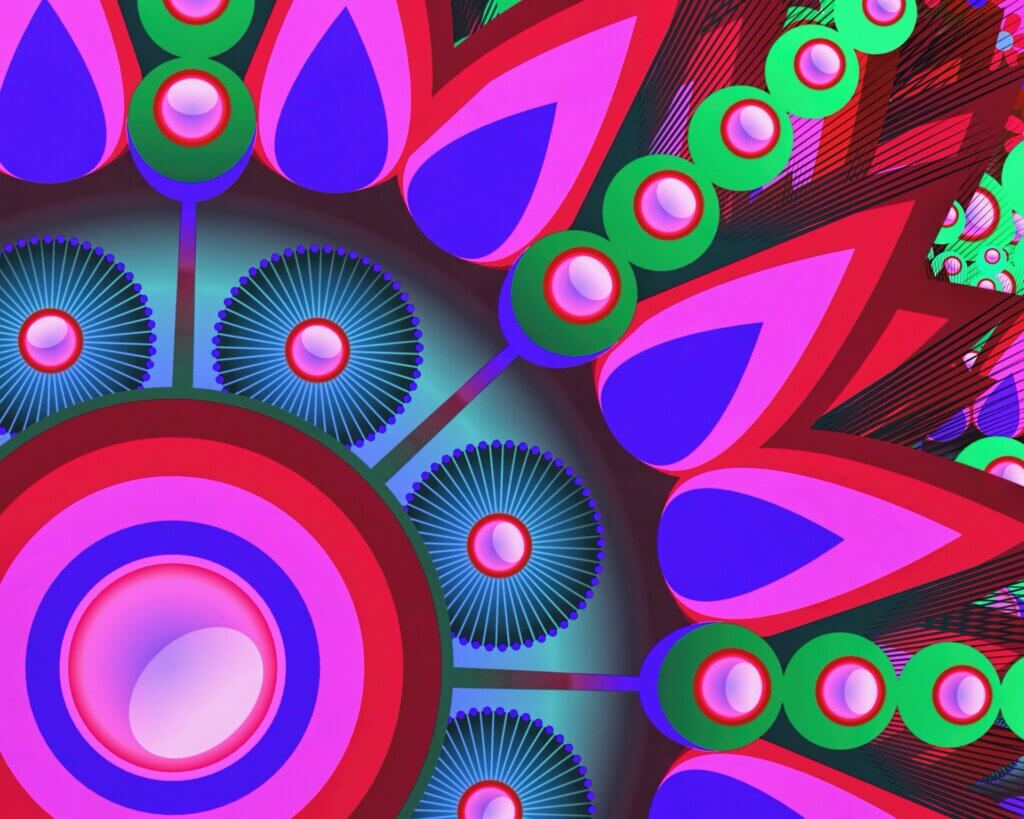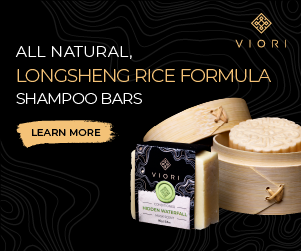Feng Shui is an ancient Chinese practice that focuses on harmonizing individuals with their surrounding environment. It is based on the idea that energy, or chi (qi), flows through spaces and affects well-being, prosperity, and overall balance in life.
KEY PRINCIPLES OF FENG SHUI:
Bagua Map – A tool used to analyze energy flow in a space, dividing it into eight life areas (wealth, health, relationships, career, etc.).
The Five Elements – Wood, Fire, Earth, Metal, and Water are used to balance energy.
Yin and Yang – The balance of opposing but complementary forces to maintain harmony.
Chi (Qi) Flow – Arranging furniture and objects to allow the smooth movement of positive energy.
Decluttering & Organization – Removing blockages (like clutter) to encourage good fortune and well-being.
Feng Shui is commonly applied to home and office design to create a peaceful, productive, and prosperous atmosphere.
MORE ABOUT EACH PRINCIPLE OF FENG SHUI
THE BAGUA MAP ORIGINATES FROM ANCIENT CHINESE PHILOSOPHY AND IS DEEPLY CONNECTED TO THE I CHING (BOOK OF CHANGES), TAOISM, AND EARLY COSMOLOGICAL OBSERVATIONS. IT IS NOT ATTRIBUTED TO A SINGLE CREATOR BUT EVOLVED OVER THOUSANDS OF YEARS BASED ON THE STUDY OF NATURAL PATTERNS, ENERGY FLOW, AND BALANCE.
ORIGINS OF THE BAGUA MAP
Fu Xi (circa 2800 BCE, legendary emperor)
He is credited with discovering the Early Heaven (Fuxi) Bagua by observing nature, celestial movements, and animal patterns. This version symbolizes cosmic order and balance.
King Wen of Zhou (circa 1100 BCE)
He adapted the bagua into the Later Heaven (King Wen) Bagua, which aligns with human life and practical Feng Shui applications.
Laozi and Taoist Philosophers
Taoism further developed the idea that qi (chi) energy flows through everything, influencing well-being. The bagua was applied to buildings, cities, and personal energy alignment.
HOW THEY KNOW IT WORKED
Observation of Nature: Early Chinese scholars noticed that certain landscapes, structures, and arrangements influenced people’s health, fortune, and happiness.
Empirical Testing: Over centuries, practitioners adjusted structures and noted how they affected prosperity and harmony.
Cultural and Spiritual Beliefs: The bagua aligns with Taoist and Confucian ideals of balance (Yin-Yang, Five Elements), which were widely respected.
Survival and Prosperity: Feng Shui was often applied to agriculture, home placement, and even royal tombs. Those who followed these principles seemed to thrive, reinforcing its credibility.
The Five Elements Theory (Wu Xing, 五行) was developed in ancient China and is attributed to Zou Yan (305–240 BCE), a philosopher of the Yin-Yang School during the Warring States period. However, the concept likely evolved much earlier through observations of natural cycles and interactions.
ORIGINS OF THE FIVE ELEMENTS
Ancient Observations – Early Chinese scholars noticed recurring patterns in nature, such as seasonal changes, weather cycles, and how materials interacted (e.g., fire burns wood, water extinguishes fire).
Zou Yan and the Yin-Yang School – Zou Yan formalized the idea that everything in the universe follows cyclical transformations based on five fundamental elements:
Wood (木) – Growth, vitality, expansion
Fire (火) – Transformation, heat, passion
Earth (土) – Stability, nourishment, grounding
Metal (金) – Structure, refinement, contraction
Water (水) – Flow, adaptability, wisdom
HOW THEY KNEW THE FIVE ELEMENTS BALANCED ENERGY?
Natural Cycles: The elements correspond to the seasons, weather, and even human life stages (e.g., youth = Wood, old age = Water).
Interdependence & Control Cycles:
Generating Cycle (Shēng 生) – Each element nourishes the next (e.g., Wood fuels Fire, Fire creates Earth through ash, etc.).
Controlling Cycle (Kè 克) – Elements also regulate each other (e.g., Water extinguishes Fire, Fire melts Metal).
Application in Medicine, Feng Shui, and Martial Arts: The theory was used in Traditional Chinese Medicine (TCM) to balance health, Feng Shui for spatial harmony, and even martial arts to understand attack and defense strategies.
Because people who followed these principles often saw improvements in health, prosperity, and harmony, the Five Elements Theory became a foundational concept in Chinese philosophy, medicine, and daily life.
The concept of Yin and Yang (阴阳) dates back to ancient China and was not “invented” by a single person but rather observed and developed over time. However, the earliest known written records of Yin and Yang come from the I Ching (Book of Changes), which dates back over 3,000 years to the Zhou Dynasty (1046–256 BCE). The philosopher Laozi (Lao Tzu) and later Zhuangzi (Chuang Tzu) further expanded on it in Taoist teachings.
ORIGINS OF YIN AND YANG
Early Observations
Ancient Chinese scholars noticed that everything in nature followed patterns of duality and balance:
Day (Yang) and Night (Yin)
Summer (Yang) and Winter (Yin)
Activity (Yang) and Rest (Yin)
These patterns led to the idea that opposing forces are interconnected and interdependent.
The I Ching (Book of Changes)
One of the oldest Chinese texts, the I Ching, describes Yin and Yang as the foundation of all natural transformations.
It uses broken (Yin) and solid (Yang) lines in hexagrams to represent balance and change in the universe.
Philosophical Expansion (Laozi & Taoism)
Laozi (6th century BCE), the founder of Taoism, wrote about Yin-Yang in the Tao Te Ching.
He emphasized the idea that everything in life exists in harmony through contrast (e.g., strength and softness, action, and patience).
Medical & Practical Applications
In Traditional Chinese Medicine (TCM), the body’s health depends on the balance of Yin (cold, passive, feminine) and Yang (hot, active, masculine).
In Feng Shui, homes and spaces are designed to balance Yin (calm, dark, cool areas) and Yang (bright, active, warm areas).
In martial arts, like Tai Chi, movements blend Yin (soft, yielding) and Yang (strong, assertive) for balance.
How They Know It Was True
Empirical Observation: People saw that imbalances led to disharmony—for example, too much Yang (heat, aggression) could lead to burnout, while too much Yin (passivity, coldness) could lead to stagnation.
Practical Results: Yin-Yang principles were applied to medicine, agriculture, architecture, and daily life, and people found that balance led to better outcomes.
Cultural Endurance: The concept has survived for thousands of years and is still widely used today in fields like acupuncture, holistic healing, and modern psychology.
Chi (Qi, 气) is the fundamental life force or energy that flows through everything in the universe according to Chinese philosophy and medicine. It is an invisible force that sustains life, movement, and balance, much like concepts found in other cultures, such as prana in Hinduism or the Force in Star Wars.
WHAT CHI IS
Chi is often described as:
The vital energy that flows through the body, nature, and the universe.
The force that animates life, giving strength and vitality.
A balance of Yin and Yang, ensuring harmony and well-being.
Where Chi Exists
In the Human Body – Chi circulates through meridians (energy pathways) and is essential for health and strength. Traditional Chinese Medicine (TCM) focuses on balancing Chi to maintain well-being.
In Nature – Wind, water, and even the shifting of the seasons are expressions of Chi.
In Spaces (Feng Shui) – Chi flows through environments, affecting the energy of a home or workplace.
In Movement – Martial arts (Tai Chi, Qi Gong) cultivate and direct Chi for power, balance, and longevity.
How We Know Chi Exists
Ancient Observations – Chinese scholars observed how breath, movement, and emotions affect vitality.
Traditional Chinese Medicine – Acupuncture, herbal medicine, and Qi Gong are used to manipulate Chi to heal illness and restore balance.
Practical Effects – Many who practice Tai Chi, meditation, or acupuncture report increased energy, relaxation, and well-being.
Decluttering and organization have been around for centuries, but no single person “invented” them. Instead, the practice developed through cultural traditions, psychology, and practical experience. Many different philosophies and experts have contributed to what we now see as the decluttering movement.
ORIGINS OF DECLUTTERING & ORGANIZATION
Ancient Wisdom & Minimalism
Buddhism & Taoism: Teachings on non-attachment emphasize simplicity and letting go of excess to achieve peace.
Stoicism (Ancient Greece & Rome): Philosophers like Seneca and Marcus Aurelius encouraged living simply, free from unnecessary possessions.
Japanese Aesthetics (Wabi-Sabi & Zen): Emphasize simplicity, mindfulness, and finding beauty in less.
Scientific & Psychological Contributions
Cognitive Load Theory: Too much clutter overwhelms the brain, leading to stress and decreased focus.
Marie Kondo (Modern Decluttering Guru): Her KonMari Method (focusing on what “sparks joy”) became famous worldwide.
Minimalist Movements: Figures like Joshua Becker & The Minimalists promote owning only what adds value to life.
Practical Benefits Observed Over Time
Improved Mental Clarity: A clean space reduces stress and anxiety.
Increased Productivity: Less clutter = fewer distractions.
Better Health & Hygiene: Less dust and mess improve air quality.
Financial Benefits: Buying and keeping only what you need saves money.
HOW WE KNOW DECLUTTERING WORKS
Personal Experience: People who declutter often feel lighter, calmer, and more in control.
Studies on Well-being: Research shows that clean environments reduce cortisol (stress hormone) and increase happiness.
Cultural Practices: Many societies, from Japanese tidying traditions to Swedish “death cleaning” (Döstädning), emphasize organization for a better life.
Several studies and scientific observations have examined the Five Elements Theory (Wu Xing), Yin-Yang Theory, Chi (Qi), and other traditional Chinese philosophical systems. While these concepts were developed through empirical observation and centuries of practice, modern science has tested some of their principles, especially in Traditional Chinese Medicine (TCM), psychology, and environmental design.
SCIENTIFIC STUDIES & EVIDENCE ON THE FIVE ELEMENTS AND RELATED THEORIES
Traditional Chinese Medicine (TCM) & the Five Elements
The Five Elements (Wood, Fire, Earth, Metal, Water) are used in acupuncture, herbal medicine, and diagnosis.
Research on Acupuncture & Qi Flow:
Studies using fMRI (functional MRI) scans show that acupuncture points activate specific brain regions, supporting the idea of meridians and Qi flow.
A 2012 meta-analysis published in Archives of Internal Medicine found acupuncture effective for chronic pain conditions.
Placebo vs. Physiological Effect
Some researchers argue that TCM principles work due to placebo effects, lifestyle changes, or indirect mechanisms, rather than literal Five Element interactions.
Feng Shui & Environmental Psychology
Feng Shui is based on balancing Yin-Yang and the Five Elements to optimize energy (Chi) in a space.
Scientific studies on clutter, lighting, and space organization:
Studies show that natural light, open spaces, and decluttering improve mental well-being, aligning with Feng Shui principles.
A 2016 study in Environmental Psychology found that people working in organized, harmonious spaces were less stressed and more productive.
Yin-Yang & Biological Rhythms
The balance of opposing forces is a concept found in circadian rhythms, homeostasis, and physics.
Biological Yin-Yang Examples:
The autonomic nervous system consists of:
Sympathetic (Yang) – fight-or-flight, activity
Parasympathetic (Yin) – rest, recovery
Balance between these two is crucial for health, mirroring Yin-Yang theory.
Five Elements & Personality Studies
Some researchers have compared the Five Elements to modern psychology models like the Big Five Personality Traits.
A 2018 study in the Journal of Traditional Chinese Medicine explored links between Five Element personality types and real-world health patterns.
While results are not conclusive, some correlations suggest the system may reflect psychological tendencies.
THIS DOESN’T MEAN THE FIVE ELEMENTS ARE SCIENTIFICALLY PROVEN
Some principles are supported by modern research, especially in medicine, psychology, and design.
Other aspects remain unverified due to their philosophical nature and difficulty in testing.
Many experts believe these ideas work as frameworks for understanding balance and harmony, rather than strict scientific laws.
Feng Shui seems less talked about today than during its peak in the West, but it hasn’t disappeared. It’s still widely practiced in China, Taiwan, Hong Kong, and other Asian countries, as well as in certain circles globally.
WAS FENG SHUI JUST A FAD?
In the 1990s and early 2000s, Feng Shui became a huge trend in the West, especially in interior design, business, and self-help movements. Many celebrities, businesses, and home designers promoted it as a way to attract wealth, success, and harmony. Books, consultants, and even TV shows made it seem like a “must-have” for a better life.
However, as trends shifted toward minimalism and evidence-based design, mainstream interest in Feng Shui declined. Many saw it as:
Too spiritual/mystical for practical use.
Just another decorating trend, similar to hygge or minimalism.
Difficult to prove scientifically, leading some to dismiss it.
FENG SHUI IS STILL RELEVANT
But more subtly.
In Asia: It’s still a major part of business and home design. Many Chinese companies, real estate developers, and banks hire Feng Shui masters to ensure good energy flow.
In the West: Some aspects of Feng Shui, like decluttering, natural light, and space organization, have been integrated into modern interior design and well-being trends.
In Business: Some people still use Feng Shui principles to arrange their office spaces for better focus and success.
FINAL VERDICT
Feng Shui wasn’t just a fad—it has ancient roots and is still practiced in many places. But its mainstream popularity in the West has faded, with its core ideas blending into modern interior design, environmental psychology, and wellness trends.
FENG SHUI HAS BOTH SUPPORTERS AND SKEPTICS, AND WHETHER IT’S BENEFICIAL DEPENDS ON HOW IT’S APPLIED. HERE’S A BREAKDOWN OF ITS PROS AND CONS:
✅ PROS OF FENG SHUI
Creates a Harmonious Living Space
Feng Shui emphasizes balance, flow, and organization, which can make a home feel more peaceful and inviting.
Using elements like natural light, open space, and plants can improve mood and well-being.
Encourages Decluttering & Organization
Feng Shui principles align with minimalism—removing clutter to allow for better energy flow.
A clean, organized space reduces stress and increases focus.
Boosts Mental & Emotional Well-being
Studies show that organized and aesthetically pleasing environments can reduce anxiety and promote relaxation.
Positioning furniture to maximize comfort and flow can improve productivity and sleep quality.
Can Enhance Interior Design
Feng Shui can be a helpful guide for arranging furniture and decor in a way that feels balanced.
It often includes natural materials, soft lighting, and symmetry, which are timeless design principles.
Still Used in Business & Real Estate
Many companies and developers (especially in Asia) use Feng Shui principles for better office layouts, financial success, and client attraction.
Some homebuyers, particularly in markets with Asian influence, consider Feng Shui when choosing a house.
❌ CONS OF FENG SHUI
Lacks Scientific Proof
While some Feng Shui concepts align with environmental psychology, many aspects (like “Chi energy” and “wealth corners”) lack empirical evidence.
Critics argue that results are often due to placebo effects or general good design principles rather than an unseen energy force.
Can Be Complex & Confusing
There are multiple schools of Feng Shui (e.g., Traditional, Black Hat, Flying Star), which sometimes contradict each other.
Some rules can be too specific or impractical, like avoiding certain house directions or furniture placements.
Can Lead to Superstition
Some people take Feng Shui too literally, making life choices based on lucky/unlucky directions, colors, or objects.
This can lead to stress, unnecessary remodeling, or fear of bad luck if things aren’t arranged “correctly.”
Expensive Consultations & Services
Professional Feng Shui consultants can be costly, especially if they recommend renovations, special furniture, or symbolic objects.
Some sellers take advantage by promoting expensive Feng Shui items that aren’t necessarily needed.
May Limit Personal Design Preferences
Strict adherence to Feng Shui rules might clash with personal taste or practical needs.
Example: A person may love dark colors, but Feng Shui might recommend avoiding them in certain areas.
Final Thoughts: Is Feng Shui Worth It?
If used practically, Feng Shui can be a helpful interior design and lifestyle guide.
If taken too literally, it can become restrictive, expensive, or superstitious.
The best approach is to apply the useful parts (decluttering, flow, lighting, balance) without stressing over every rule.
THE ORIGINS AND EVOLUTION OF FENG SHUI
Feng Shui dates back over 3,000 years to ancient China, where it was originally used to determine the best locations for homes, graves, and cities. Early practitioners observed how landscapes, water flow, and natural elements influenced agriculture, health, and prosperity. Over time, it developed into a structured system incorporating Yin-Yang balance, the Five Elements (Wood, Fire, Earth, Metal, Water), and the Bagua Map—a grid used to align spaces with different aspects of life (wealth, relationships, health, etc.).
During the Tang and Song dynasties, Feng Shui became more formalized, with scholars and geomancers advising emperors on palace layouts. Later, it was absorbed into Traditional Chinese Medicine, martial arts, and business practices. When it spread to the West in the 20th century, it was often simplified, sometimes focusing only on interior design while omitting its deeper philosophical and geomantic roots.
HOW FENG SHUI IS USED BEYOND INTERIOR DESIGN
Most people associate Feng Shui with home decorating, but its principles apply to architecture, urban planning, and even personal well-being. For example:
In business, Feng Shui is used to arrange office layouts, reception areas, and cash registers to increase financial flow and customer engagement. Some major corporations (especially in Asia) consult Feng Shui experts when designing headquarters.
In real estate, homes with “good Feng Shui” (like open layouts, natural lighting, and an unobstructed main entrance) tend to sell faster and at higher prices.
In urban planning, cities like Hong Kong have been designed with Feng Shui principles in mind, using water, mountains, and skyscraper placements to create balanced energy.
DIFFERENT SCHOOLS OF FENG SHUI
There isn’t just one Feng Shui system—there are multiple schools, each with unique methods:
Form School (the oldest) focuses on natural landscapes, emphasizing how mountains, rivers, and surroundings influence energy.
Compass School uses a Luo Pan Feng Shui compass to analyze directions and their effects on different life areas.
Black Hat Sect (BTB Feng Shui) is a modernized Western version that simplifies traditional rules and emphasizes intention-setting.
Flying Star Feng Shui uses numerology and astrology to track changing energy patterns over time.
COMMON FENG SHUI MYTHS & MISCONCEPTIONS
Many misconceptions surround Feng Shui, especially in Western interpretations:
Myth: You must buy expensive Feng Shui items like lucky bamboo, crystals, or money frogs.
Reality: Feng Shui is about energy flow, balance, and intention, not specific objects. While symbols can reinforce positive energy, they aren’t required.
Myth: Your life will dramatically change just by moving furniture.
Reality: Feng Shui is one factor in well-being—it won’t replace hard work, habits, or mindset.
Myth: Feng Shui is just superstition.
Reality: While some aspects are mystical, many overlap with psychology and environmental design, such as decluttering, lighting, and spatial harmony.
MODERN ADAPTATIONS & PRACTICAL APPLICATIONS
Today, many people use Feng Shui in a practical, flexible way rather than strictly following every rule. Some modern adaptations include:
Biophilic design, which incorporates natural elements like wood, plants, and sunlight to improve mood and productivity.
Minimalist interiors that promote calmness and order, aligning with Feng Shui’s decluttering principles.
Smart home layouts that ensure ease of movement, relaxation, and functionality.
Whether you believe in its spiritual aspects or just see it as a design philosophy, Feng Shui remains influential and adaptable for creating harmonious, functional spaces.
IF YOU’RE INTERESTED IN DIVING DEEPER INTO THE TOPICS WE’VE DISCUSSED REGARDING FENG SHUI AND RELATED SUBJECTS, THERE ARE SEVERAL GREAT RESOURCES AVAILABLE ACROSS BOOKS, WEBSITES, AND PROFESSIONALS. HERE’S WHERE YOU CAN FIND MORE INFORMATION:
1. Books
- “The Complete Idiot’s Guide to Feng Shui” by Elizabeth Moran & Val Biktashev: A great starting point for beginners, offering a clear and practical approach to Feng Shui.
- “Feng Shui for Dummies” by David Daniel Kennedy: This book breaks down complex concepts into understandable sections and gives practical advice.
- “The Book of Feng Shui” by David Daniel Kennedy: A comprehensive resource on Feng Shui principles, providing an in-depth explanation of the Bagua, Five Elements, and how to apply them in your home or business.
- “The Western Guide to Feng Shui” by Terah Kathryn Collins: A Western perspective on Feng Shui, with modern examples and how to apply Feng Shui in your environment.
2. Websites
- The International Feng Shui Guild (IFSG): www.ifsguild.org
Offers information about Feng Shui certification, events, and finding consultants, as well as educational articles. - Feng Shui Society: www.fengshuisociety.org.uk
A UK-based site providing information about traditional Feng Shui practices and a directory of consultants. - Feng Shui for Life: www.fengshuiforlife.com
This site offers practical advice on Feng Shui, tips for home design, and tools like Bagua maps and energy tips. - Feng Shui Mastery: www.fengshuimastery.com
A resource for learning Feng Shui techniques, tools, and methods to improve the energy in your home or office.
3. Online Courses
- Udemy: Offers multiple Feng Shui courses ranging from beginner to advanced levels. Check out options like “Feng Shui for Beginners” or “Mastering Feng Shui in Your Home.”
- The Feng Shui Institute: Provides online workshops and certifications for those who want to learn Feng Shui at a deeper level.
- The International Feng Shui School: Offers online Feng Shui certification programs for those interested in becoming consultants or expanding their knowledge.
4. Feng Shui Consultants & Practitioners
- If you want more personalized guidance, finding a Feng Shui consultant or geomancer can be a great option. Many consultants offer services online for home and business assessments.
- Check the International Feng Shui Guild website for professionals in your area or available for virtual consultations.
- Personal referrals from friends or online reviews can help find reputable consultants.
5. YouTube Channels
- Lillian Too’s Feng Shui: Lillian Too is a well-known Feng Shui expert, and her YouTube channel provides tips on how to use Feng Shui in daily life.
- Feng Shui with Karen Kingston: Karen Kingston, a leading expert in space clearing and Feng Shui, shares valuable tips on creating balanced, harmonious spaces.
- The Feng Shui Master: Offers practical tips on applying Feng Shui principles to enhance areas of life like wealth, health, and relationships.
6. Blogs and Articles
- Feng Shui Expert: www.fengshui-expert.com
Offers expert insights and articles on how to apply Feng Shui to various life aspects, from health to relationships. - My Feng Shui Home: www.myfengshuiprettyhome.com
A blog with helpful tips on Feng Shui for interior design and organizing your home to create a peaceful environment.
These resources should give you a wide range of material to explore the principles, practices, and modern adaptations of Feng Shui. Whether you’re looking for a deeper philosophical understanding or more practical tips for organizing your space, you’ll find something to suit your needs.


















